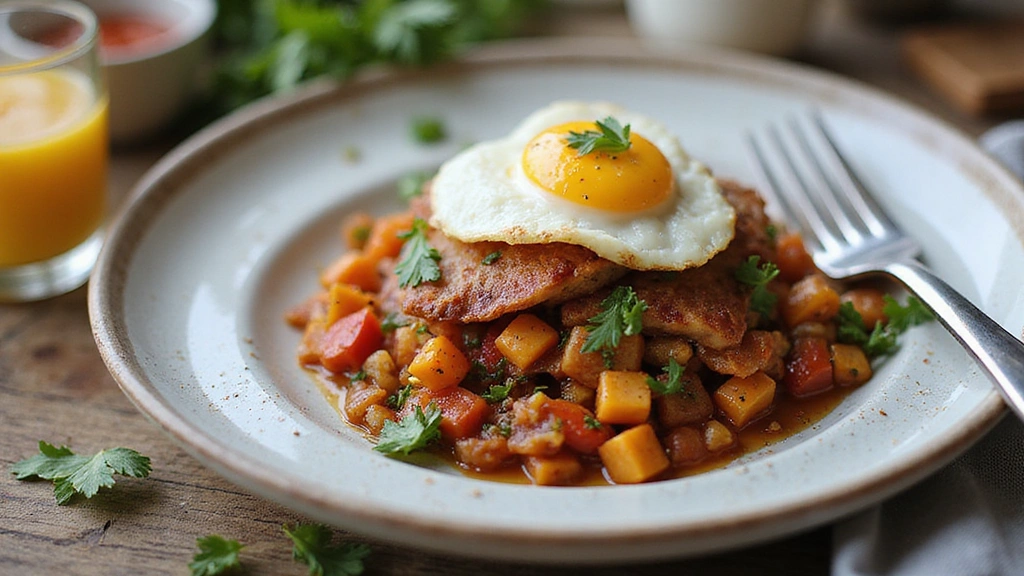Waking up to a delicious breakfast is a joy, but what if you could enjoy it without the carbs?
These low carb vegan breakfast recipes are not just plant-based; they are packed with flavors and nutrients that will leave you feeling satisfied all morning.
With vibrant ingredients and innovative cooking techniques, you can start your day on a healthy note without sacrificing taste.
Perfect for anyone seeking to balance health with a love for good food, these recipes prove that a fulfilling breakfast can be deliciously vegan and low in carbs.
The History and Cultural Significance
• Low Carb Vegan Breakfast Recipes Plant-based & Satisfying traces its origins to the rise of veganism in the late 20th century, where health-conscious individuals sought alternatives to traditional breakfast foods.
• The dish evolved over decades as chefs and home cooks began to explore plant-based ingredients, eventually becoming the beloved version we know today.
• In many modern health movements, this dish traditionally appears at wellness retreats and vegan brunches, symbolizing a commitment to healthy living and sustainability.
• While many variations exist across different cultures, the authentic version maintains a focus on whole foods and fresh ingredients that set it apart from less nutritious options.
Recipe Overview
Nutritional Information (per serving)
Ingredients
Essential Equipment Guide
Non-Stick Skillet: This tool is essential for cooking low-carb breakfast recipes without the need for excessive oil. Look for one with a durable coating to ensure even heat distribution and easy cleanup.
Blender: A high-quality blender is key for smoothies or sauces that can complement your breakfast. Opt for a powerful model that can easily blend tough ingredients like nuts or leafy greens.
Spatula: A good spatula allows for easy flipping and serving of cooked items. Consider silicone or wooden options that won’t scratch non-stick surfaces.
Preparation Methods
Chopping: This technique involves cutting vegetables into uniform pieces to ensure even cooking. Use a sharp knife for precise cuts and a stable cutting board to maintain safety.
Sautéing: Sautéing is a quick-cooking method that involves cooking food quickly in a small amount of oil or water. Keep the heat at medium to avoid burning the ingredients and to achieve that perfect tender texture.
Blending: Blending helps to create smooth textures for sauces and smoothies. Ensure your ingredients are cut into smaller pieces before adding them to the blender for optimal blending.
Step 1: Prepare Ingredients
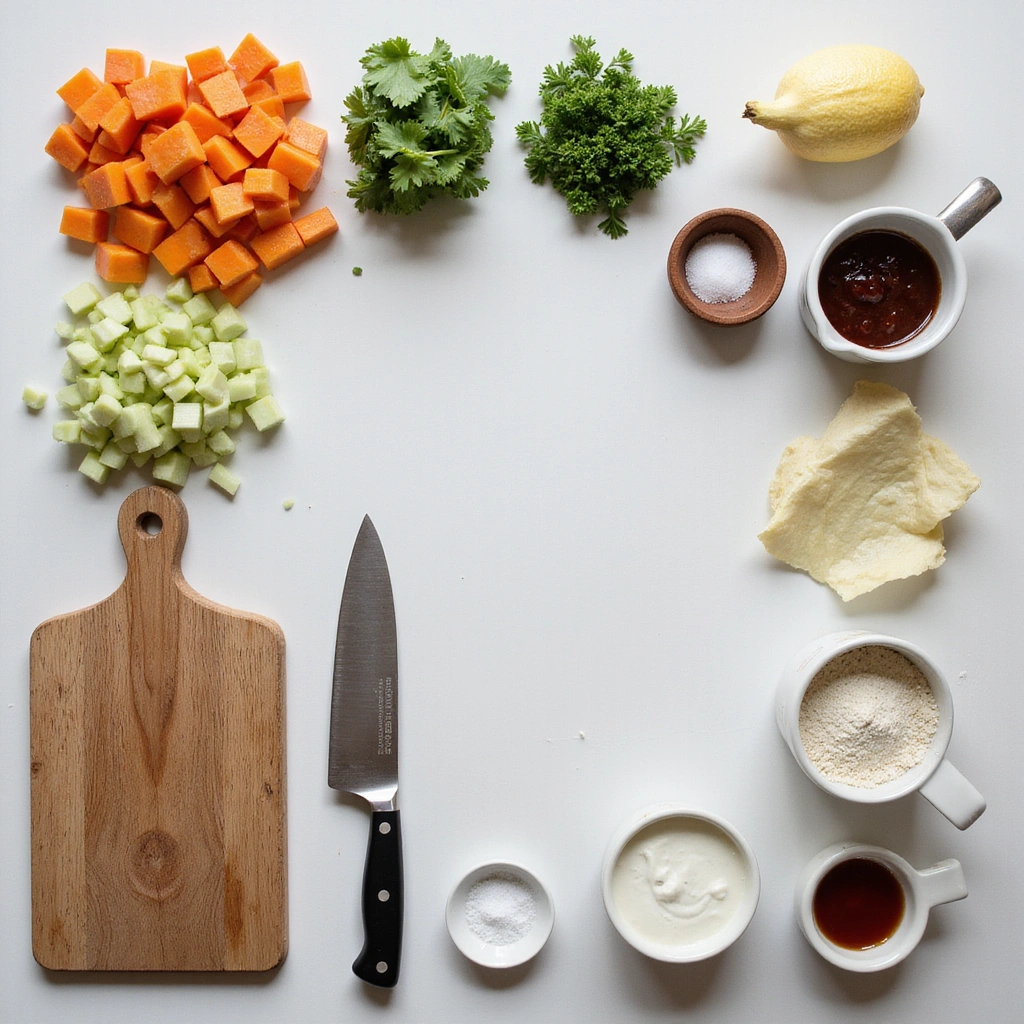
Gather all your ingredients on a clean surface.
Chop the spinach, bell pepper, and onion into uniform pieces.
This ensures that everything cooks evenly and quickly.
Having everything prepared in advance will make the cooking process flow smoothly.
Step 2: Heat the Skillet
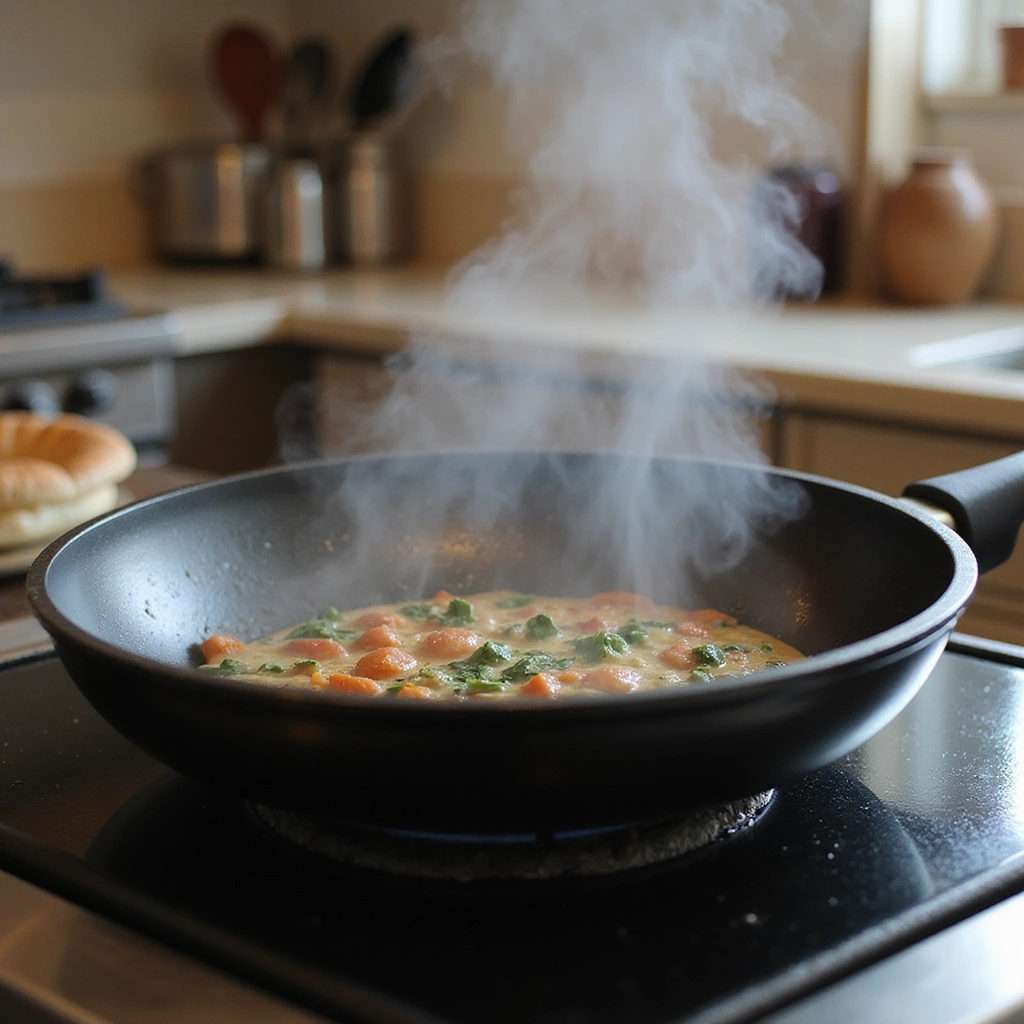
Place your non-stick skillet over medium heat.
Allow it to warm up for a couple of minutes before adding the oil.
This helps to create a non-stick surface for cooking.
Make sure the skillet is hot enough to sizzle when you add the vegetables.
Step 3: Sauté Vegetables
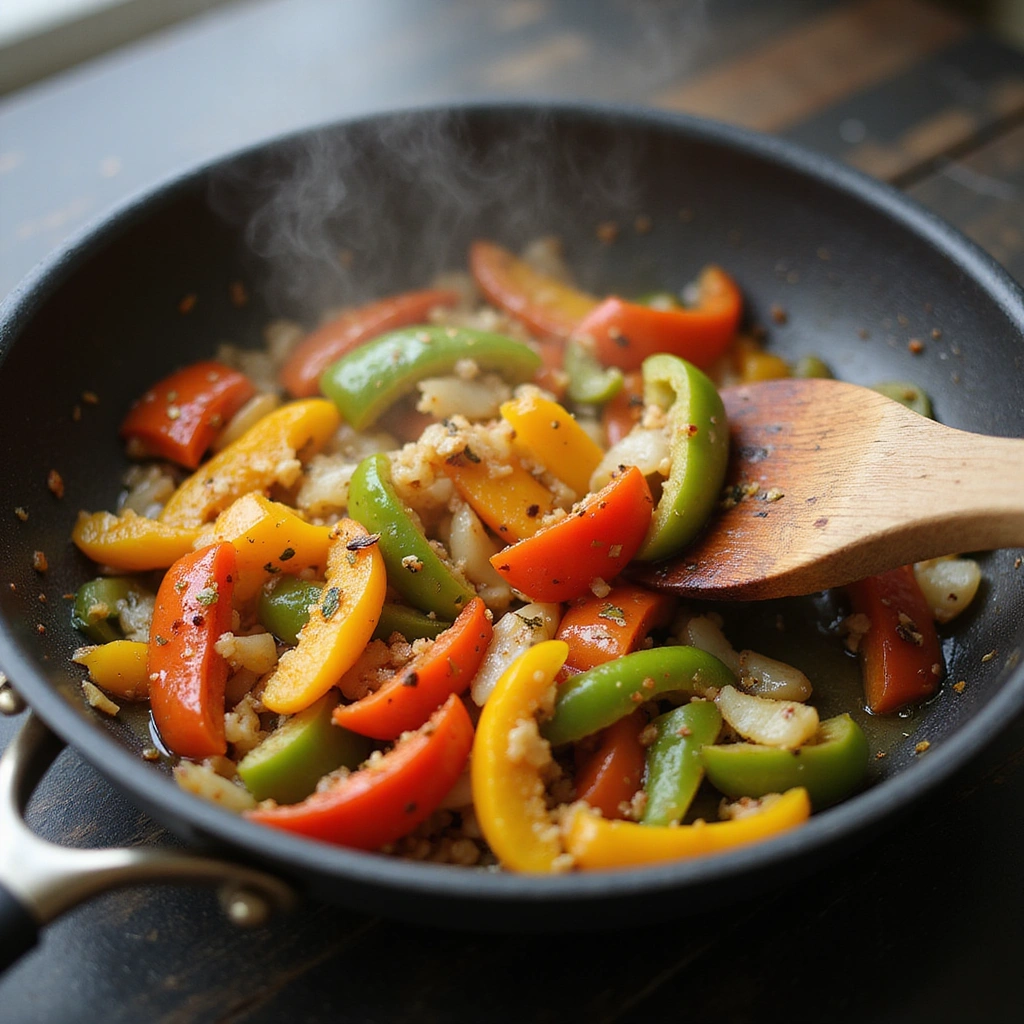
Add a splash of oil to the heated skillet.
Then, toss in the chopped onion and bell pepper first.
Cook them for about 3-4 minutes until they are soft.
Stir frequently to prevent sticking and ensure even cooking.
Step 4: Add Spinach
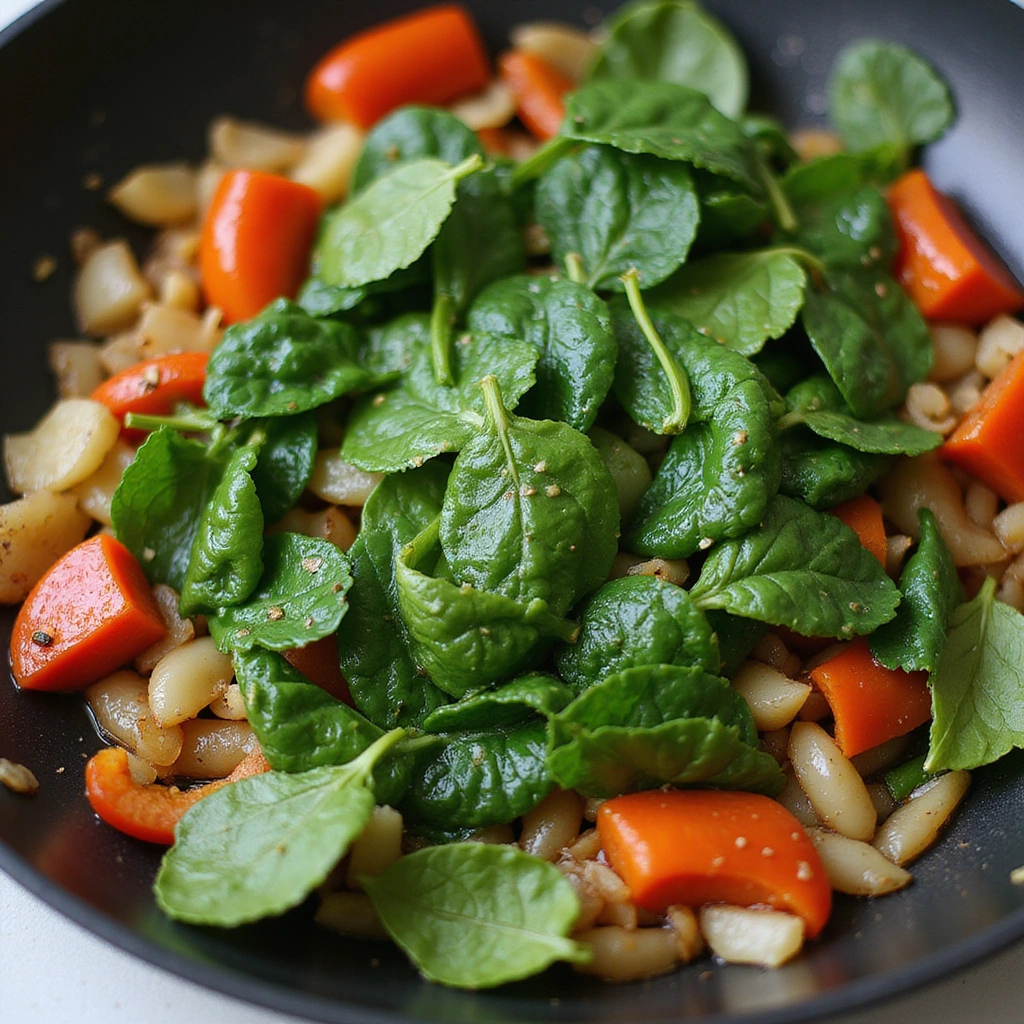
Once the bell peppers and onions are tender, add the chopped spinach.
Stir the mixture until the spinach wilts down, which should take about 2 minutes.
Keep an eye on it to ensure the spinach doesn’t overcook.
This step adds vibrant color and nutrients to your dish.
Step 5: Add Seasoning
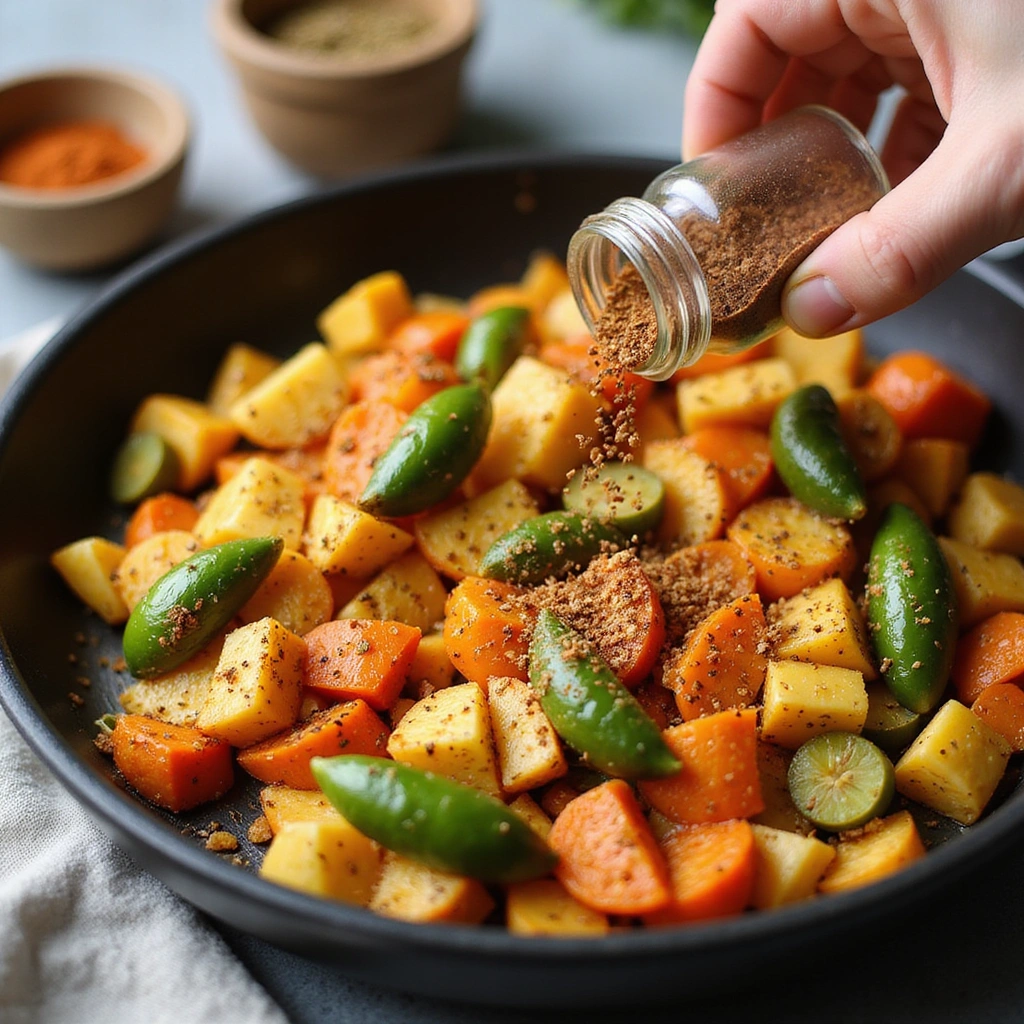
Sprinkle the turmeric, cumin, salt, and pepper over the vegetable mixture.
Stir well to ensure the spices are evenly distributed.
This will enhance the flavors of your breakfast dish.
Taste and adjust the seasoning if necessary.
Step 6: Prepare the Almond Flour Mixture
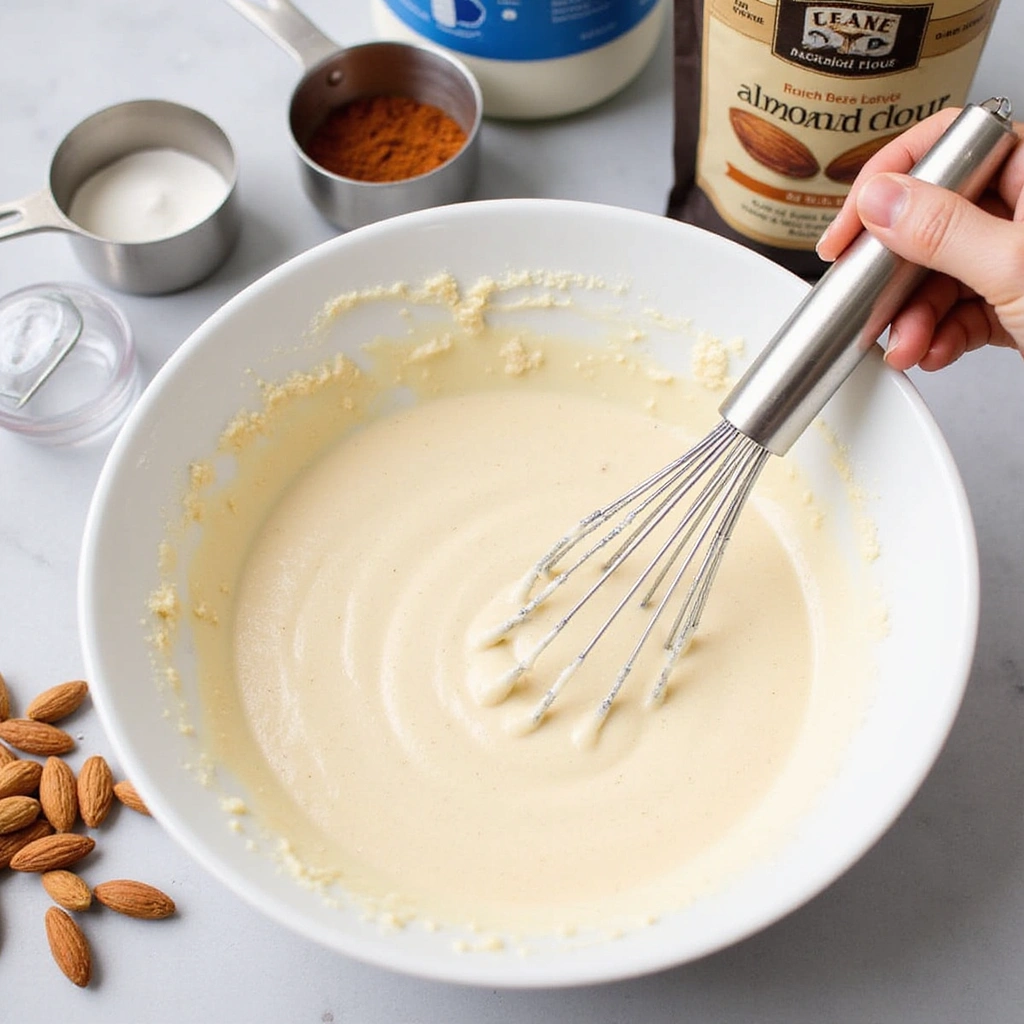
In a separate bowl, mix the almond flour and almond milk.
Stir until you achieve a smooth batter.
This mixture will serve as the base for your breakfast.
Make sure there are no lumps for a better texture.
Step 7: Combine Mixtures
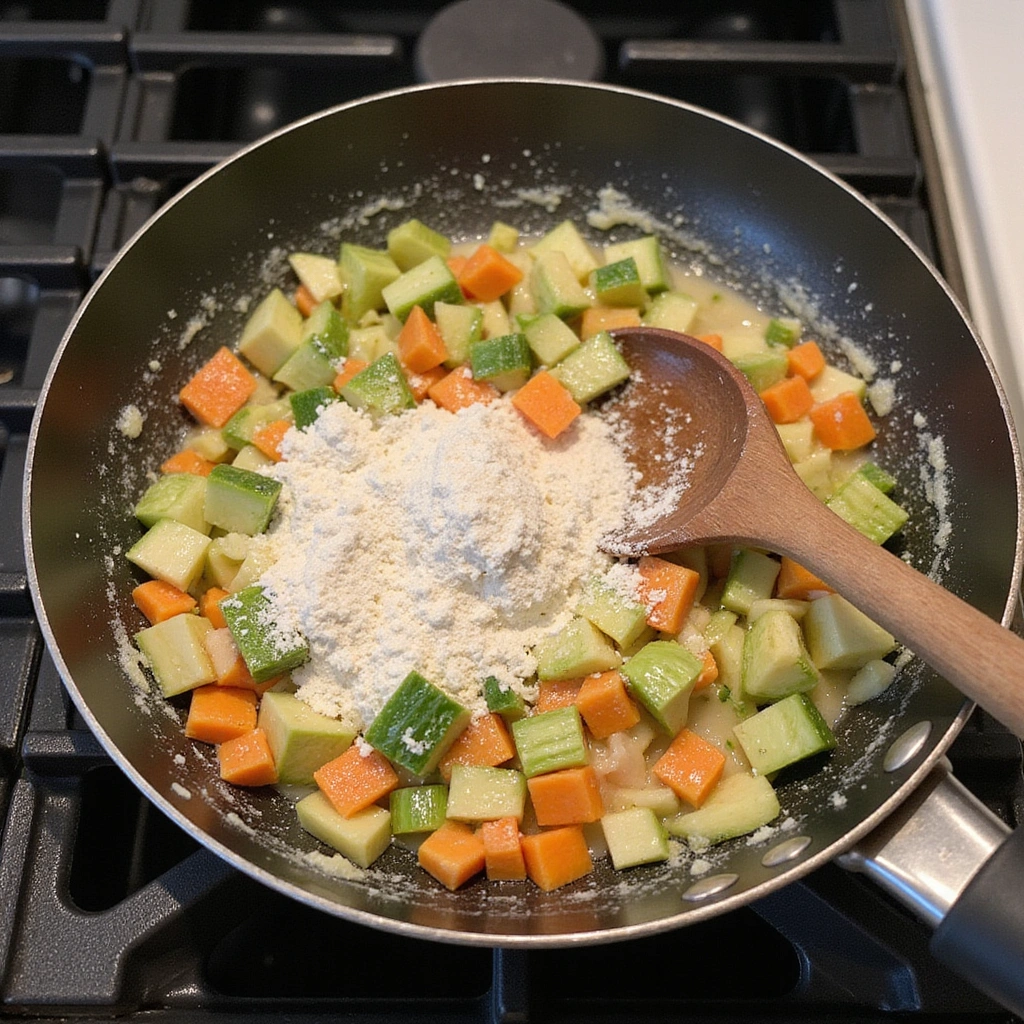
Pour the almond flour mixture into the skillet with the sautéed vegetables.
Gently fold everything together until well combined.
This step creates a cohesive breakfast dish packed with nutrients.
Ensure that the mixture is evenly spread in the skillet.
Step 8: Cook Thoroughly
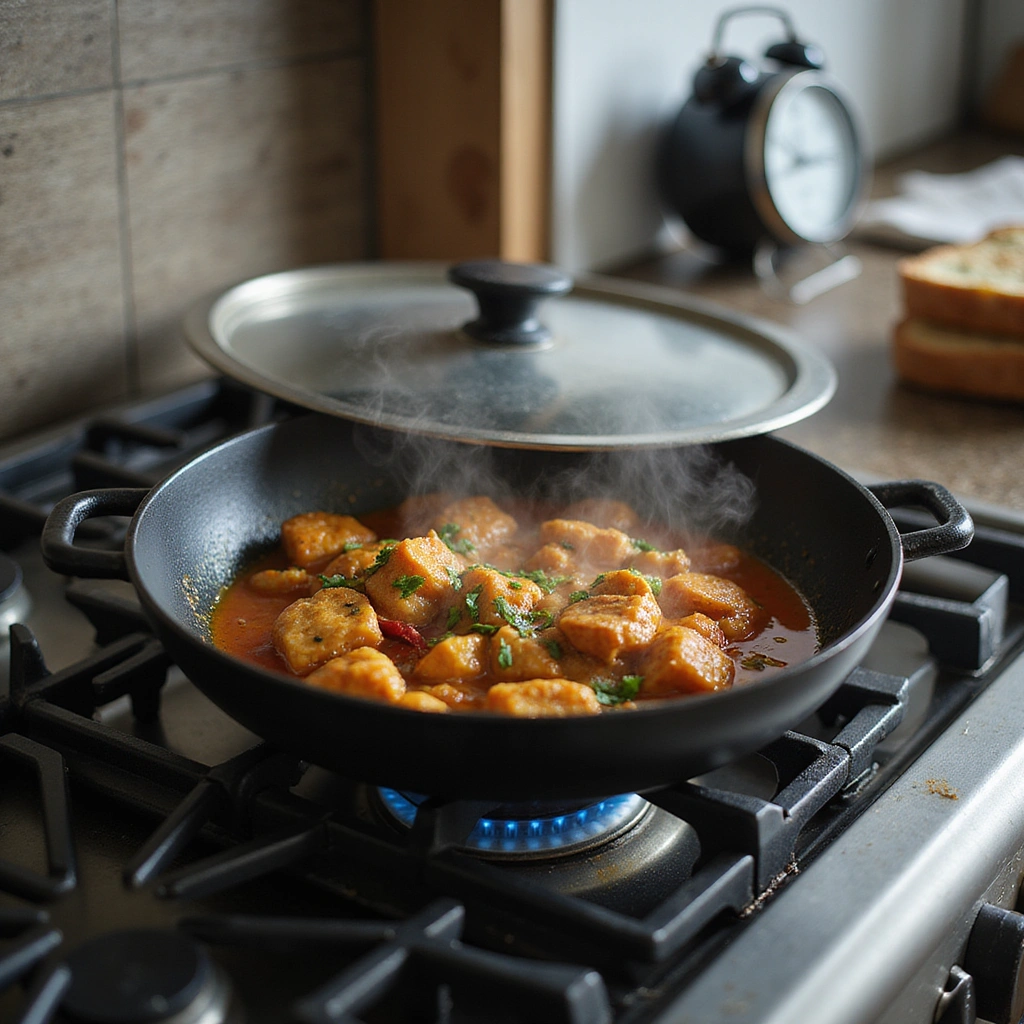
Allow the mixture to cook for about 5-7 minutes.
Check for a golden crust forming on the bottom.
This indicates it is cooking properly without burning.
You can also cover the skillet to ensure even cooking throughout.
Step 9: Serve
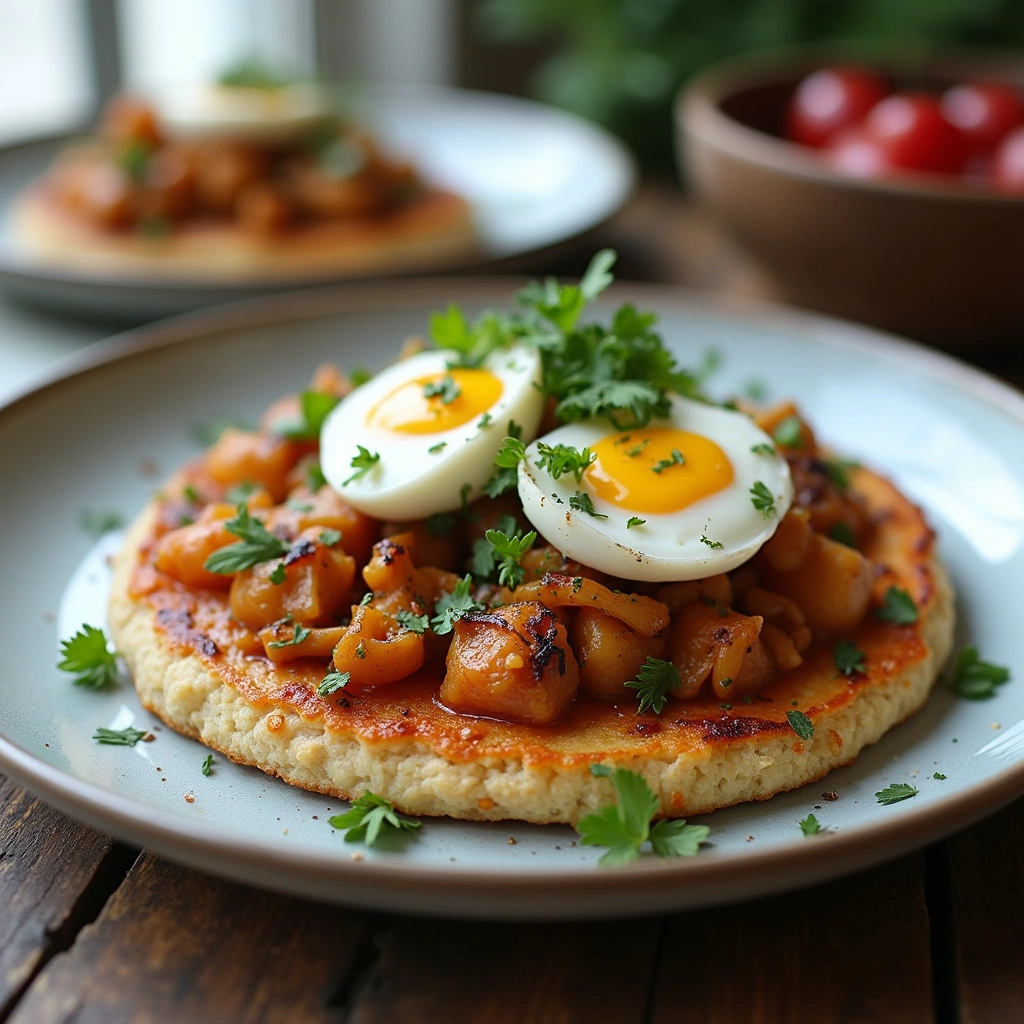
Once cooked, remove the skillet from heat.
Scoop out portions onto plates and garnish with fresh herbs if desired.
This adds a pop of color and freshness to the dish.
Enjoy your low carb vegan breakfast warm for the best experience.
Critical Timing and Temperature Guide
Cooking Vegetables: Cook the vegetables for about 5-7 minutes over medium heat, stirring frequently to avoid burning. Look for them to be tender and slightly caramelized. Common mistakes include cooking on too high heat, which can lead to burning.
Combined Cooking Time: After combining the almond flour mixture with the vegetables, allow it to cook for another 5-7 minutes. A golden crust should form on the bottom. Avoid lifting the lid too often, as it can release steam and alter cooking times.
Serving Temperature: Serve the dish warm for optimal flavor and texture. Allowing it to sit too long can cause it to cool and become less enjoyable.
Pro Tips for Low Carb Vegan Breakfast Recipes Plant-based & Satisfying
• Ingredient Selection: Choose high-quality almond flour and fresh organic vegetables for the best flavor and nutrition.
• Preparation Secret: Sautéing the vegetables first enhances their natural sweetness and flavor before adding them to the batter.
• Temperature Management: Ensure your skillet is adequately heated before adding ingredients to promote even cooking and prevent sticking.
• Texture Enhancement: For a fluffier texture, whisk the almond flour batter vigorously to incorporate air.
• Flavor Layering: Add a splash of lemon juice before serving to brighten the dish and enhance the flavor profile.
• Make-Ahead Strategies: Prepare the vegetable mixture in advance and store it in the refrigerator for up to 2 days.
• Restaurant-Quality Finishing Touches: Drizzle a bit of olive oil or a sprinkle of nutritional yeast on top before serving for added flavor.
• Equipment Optimization: Use a heavy-bottom skillet for more even cooking and better heat retention.
Troubleshooting Common Issues
• Texture Too Dense: This issue often arises from too much almond flour or not enough moisture. Ensure you measure accurately and adjust liquid if necessary. Consider adding more almond milk to lighten the batter.
• Flavors Unbalanced: If the dish tastes bland, it may need more seasoning. Adjust salt and spices to enhance the overall flavor. Always taste before serving to correct seasoning.
• Burnt Bottom: This can happen if the heat is too high or if the dish is not stirred enough. Reduce the heat and stir frequently to prevent burning.
• Vegetables Not Cooked: If the veggies are undercooked, ensure they are cut into smaller pieces for quicker cooking. Cover the skillet to trap steam and cook faster.
• Too Much Oil: Excess oil can make the dish greasy. Use a minimal amount of oil and consider non-stick spray or a non-stick skillet to reduce the need for oil.
Variations and Regional Differences
• Italian Variation: Incorporate Italian herbs like basil and oregano, and add sun-dried tomatoes for a Mediterranean twist. This version celebrates the rich flavors of Italian cuisine while remaining low-carb.
• Mexican Variation: Add jalapeños and cilantro, and serve with avocado slices for a spicy and fresh breakfast option. This reflects the vibrant flavors of traditional Mexican breakfasts.
• Asian-Inspired Variation: Mix in some tofu and soy sauce, and serve with sesame seeds on top. This adaptation highlights Asian flavors while keeping it vegan and low in carbs.
• Modern Interpretations: Consider adding plant-based protein powders or superfoods like spirulina to boost the nutritional content and cater to contemporary health trends.
Food Science Behind the Recipe
• Emulsification: The process of mixing almond flour with almond milk creates an emulsion that helps bind the ingredients together, resulting in a cohesive batter.
• Maillard Reaction: This occurs when the almond flour and vegetables are cooked, creating complex flavors and a golden color. Understanding this reaction helps in achieving that desirable crust while cooking.
• Moisture Retention: The spinach and other vegetables release moisture during cooking, which helps to keep the dish from drying out. Properly managing moisture is key to a successful breakfast.
Frequently Asked Questions
What’s the most common mistake people make when preparing low carb vegan breakfast recipes? The top mistake is not properly seasoning the dish. Always taste and adjust seasoning during cooking to enhance flavors.
Can I prepare components of this dish in advance? Yes, you can prepare the vegetable mixture up to two days in advance. Store it in an airtight container in the refrigerator.
How do I adapt this recipe for dietary restrictions? For gluten-free options, ensure your almond flour is certified gluten-free. Substitute any vegetables based on personal allergies or preferences.
What’s the best way to store and reheat leftovers? Store leftovers in an airtight container in the refrigerator for up to 3 days. Reheat in a skillet over low heat to maintain texture.
Can I freeze this dish? Yes, you can freeze the cooked dish for up to a month. Thaw in the refrigerator overnight and reheat on the stovetop.
What wine or beverages pair best with this dish? Fresh juices like orange or green smoothies pair beautifully, complementing the dish’s flavors without overpowering.
How can I scale this recipe up for a crowd? Simply multiply the ingredients by the number of servings needed, keeping cooking times in mind as larger quantities may take longer to cook through.
What side dishes complement this recipe best? A fresh fruit salad or a side of avocado toast would enhance the meal and provide additional nutrients.
How do professional chefs elevate this dish for restaurant service? Chefs often add microgreens as a garnish or a drizzle of gourmet olive oil to enhance presentation and flavor.
Serving and Presentation Guide
• Traditional Presentation: Serve the dish in a shallow bowl with a sprinkle of fresh herbs on top. This provides a rustic and homey feel, perfect for a cozy breakfast.
• Modern Plating Ideas: Use a large white plate and create a colorful arrangement of the breakfast mixture, garnished artistically with herbs and a drizzle of sauce.
• Accompaniment Suggestions: Pair with a fresh fruit salad, yogurt, or nut butter on the side to add variety and flavors to your breakfast.
• Special Occasion Presentation: For celebrations, serve individual portions in mason jars with layers of the mixture and garnishes for a fun and trendy look.
Conclusion
I hope you feel inspired to try these low carb vegan breakfast recipes.
They offer a delightful way to start your day with health and flavor.
Embrace the creativity and nourishment that plant-based ingredients provide, and enjoy every bite!

